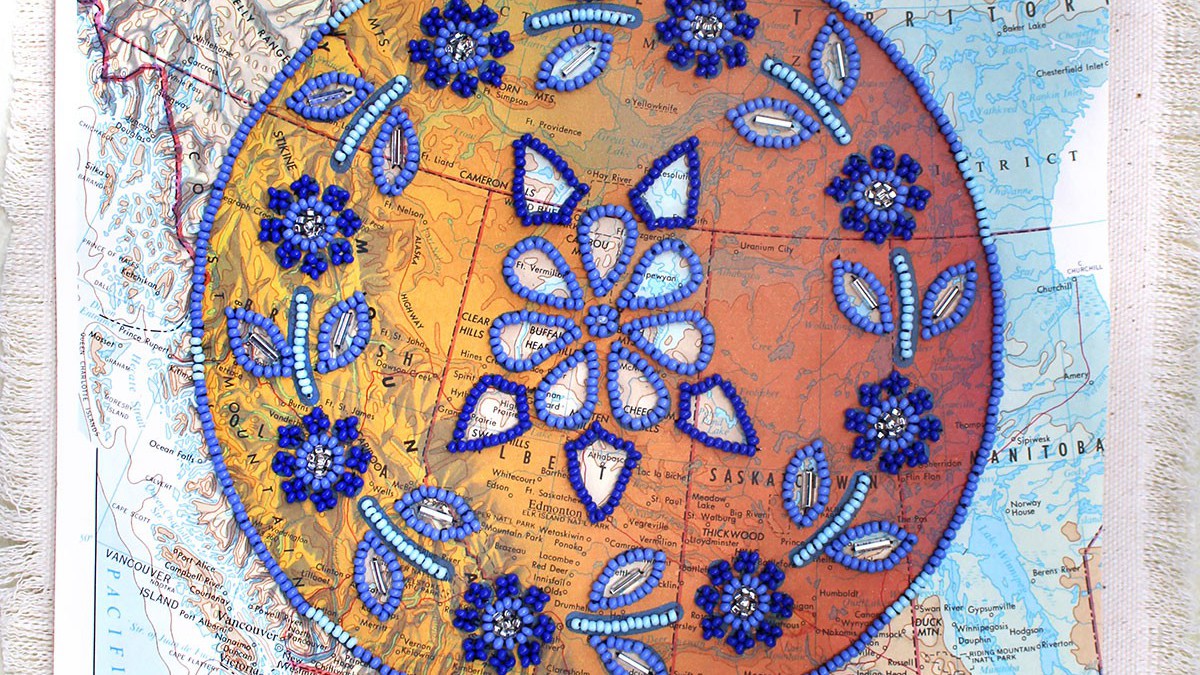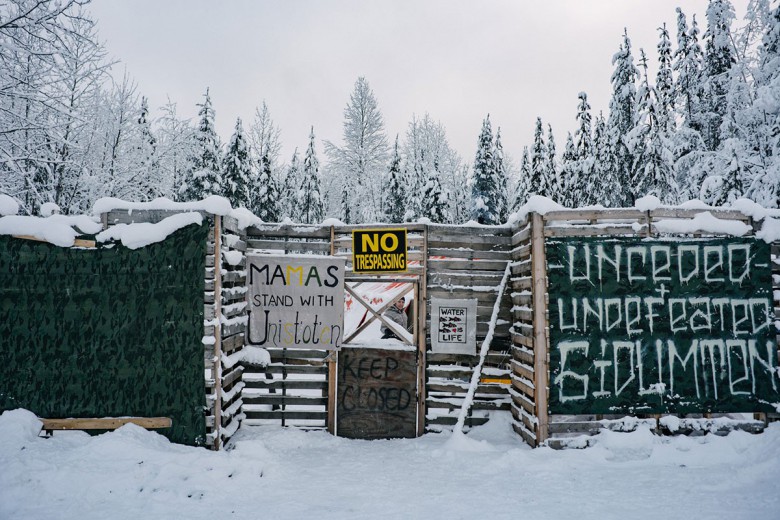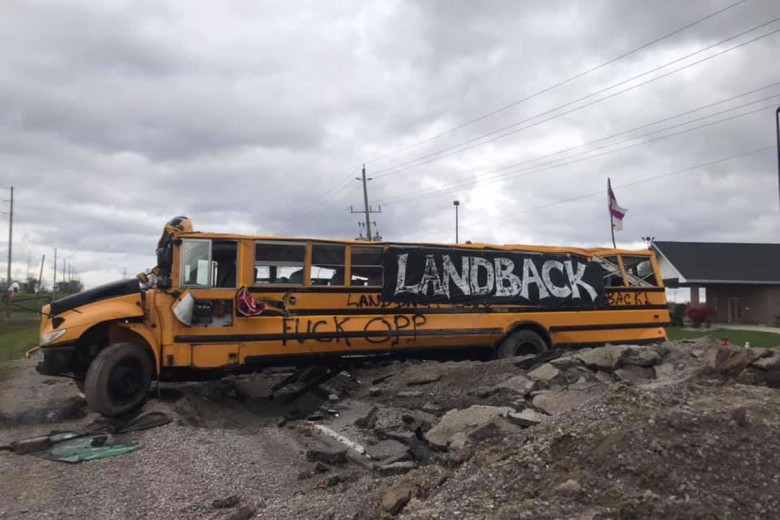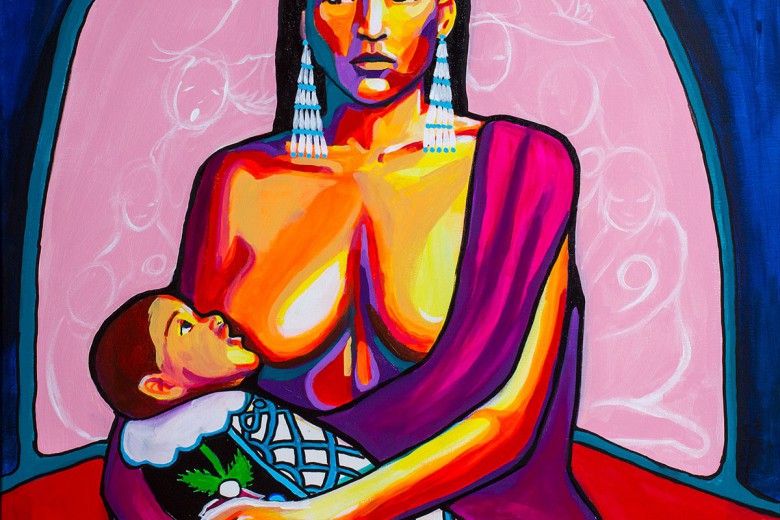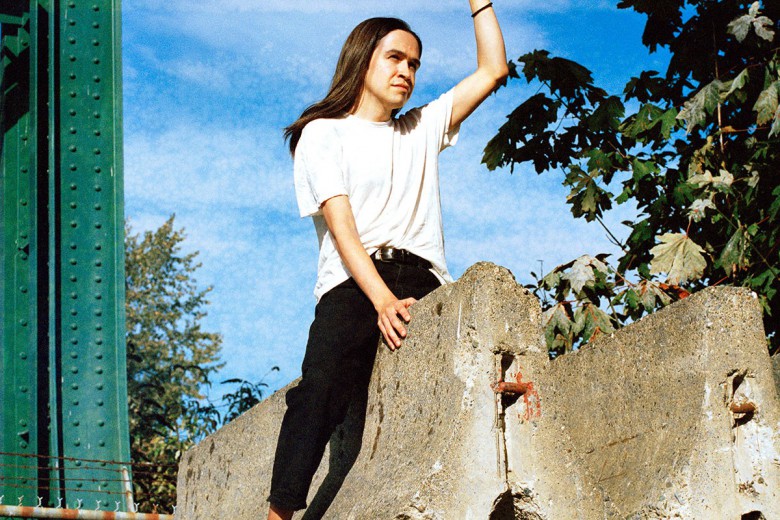In a YouTube video from January titled “#LANDBACK Update from Gidimt’en Territory,” Denzel Sutherland-Wilson of the Gitxsan Nation reflected on the eviction of the Coastal GasLink pipeline company from the lands of the Wet’suwet’en Nation nine days earlier. “People get confused about what we want as Native people. It’s like, ‘what do you want?’ … Just Land Back. It’s funny, though. When I said that to my dad, you know, to Gitxsan-Wet’suwet’en people, if you tell them about Land Back, they’re like, ‘We never lost the land anyway.’ Which is true.”
As Indigenous Peoples, we have never completely lost our connection to our lands and waters, nor our collective understanding of ourselves as Peoples, despite Canada’s ongoing violent occupation of our territories, repeated displacements of our communities, and various attempts to assimilate us into its political and economic order.
Since Canada can’t hide our Peoples’ lands, it seeks to remove our consciousness itself and break our mode of social relations.
Canada has shifted its colonial tactics back and forth over time. It has used warfare and diplomacy, removed entire communities, and removed our children from our communities. But all of its tactics share the same goal: to eliminate the political alternative and resistance to Canada that Indigenous Peoples represent.
And we as Indigenous Peoples have used various means of resistance over the years as well – from armed conflict, to directly petitioning politicians while voting and hiring lawyers were both banned under the Indian Act, to unarmed blockades and occupations to stop settler development projects.
Where did the land go?
In 1911, the chiefs of dozens of Native bands in British Columbia wrote to the federal minister of the interior, petitioning for an acknowledgment of their land title, which the provincial government had been refusing and which remains an outstanding point of conflict to this day. “If a person takes possession of something belonging to you, surely you know it, and he knows it, and land is a thing which cannot be taken away and hidden,” they wrote. “We see it constantly, and everything done with it must be more or less in view.”
Since Canada can’t hide our Peoples’ lands, it seeks to remove our consciousness itself and break our mode of social relations. But outright violence and repression alone don’t remove our collective consciousness, so the state has resorted to a variety of increasingly insidious tactics.
But all of its tactics share the same goal: to eliminate the political alternative and resistance to Canada that Indigenous Peoples represent.
While Canadians have been content to view residential schools and other Indian Act restrictions merely as unfortunate episodes of history to be put behind us, Indigenous child apprehension to non-Native foster care homes continues unabated. At the same time, massively disproportionate incarceration rates for Native people have been escalating over the past decade.
When resistance breaks out, like it did with the cross-country Wet’suwet’en solidarity movement at the beginning of this year, the police are brought in to remove us from our own lands, and the Canadian state and corporate media work overtime to falsely portray the conflict as being only a criminal matter, invoking Canada’s rule of law while ignoring Indigenous laws.
After the so-called “Oka Crisis” of 1990, when Indigenous people across the country set up blockades in solidarity with the Mohawk community of Kanehsatà:ke, Canada revved up its response on two tracks at once: tighter control of the media when responding to direct actions, and policy manoeuvres around municipal-style self-government and “reconciliation.”
The land has always been here and we’ve always been reclaiming parts of it. So, Canada’s challenge is how to keep us off of it and how to keep us from holding onto the idea that it’s right for us to reclaim it.
Whose land?
Non-Native people, both those for and those against Indigenous resistance, often oversimplify our struggle as being just about who owns the land, whether it belongs to Canada or our Peoples. But just as importantly, it’s about how the land is owned – how we relate to it, how we relate to each other through it, and who “we” are as Indigenous Peoples.
In settler-colonial societies, land appears as an immense accumulation of property titles. To traditionalist Indigenous Peoples, in contrast, land is not a thing in itself but a social relationship between all living and non-living beings.
Settler state policy is war by other means, working to replace our full sovereignty and jurisdiction over our lands and waters with mere municipal powers, delegated from the provincial and federal governments above, and opening the way to further corporate development.
To traditionalist Indigenous Peoples, in contrast, land is not a thing in itself but a social relationship between all living and non-living beings.
Canada seeks to replace our traditional forms of governance – which crucially involved women, non-binary, trans, and Two-Spirit people – with its own patriarchal political forms, like the Indian Act’s band council system or other government-funded bureaucracies. How we relate to the land is tied to who we are. When we say Land Back, who is the land supposed to be going back to, and in what form?
Kainai Nation (Blood Tribe) leader Marie Smallface Marule commented on this dynamic in her 1984 article on Native governance, saying, “The coercive imposition by the Canadian government of an elected form of government on Indians is in direct conflict with traditional forms of government. The elective model is based on individual ownership of land and the delegation of authority from above, and it has created serious problems in our Indian communities. This is particularly true among the prairie tribes, where there has always been a strong tradition of decision-making by consensus rather than by individuals in authority.”
Relations back
Canadian Indigenous policy currently promotes so-called self-government agreements (including modern “treaties” in British Columbia) and various means for First Nations bands to opt out of the Indian Act, either partially or completely.
This also involves converting reserve and non-reserve Traditional Lands into private property (known as “fee simple”) and making permanent agreements with band councils that forbid them from ever bringing forward court cases on Indigenous Land Title in the future (such as in the Tsawwassen First Nation Final Agreement of 2007). The goal is to create economic certainty for settler corporations looking to invest in developments on Native land.
However, this attempted swindle is not always successful – like, for example, in 2018, when the Lheidli T’enneh community (of the Dakelh people) voted no to a “treaty” under British Columbia’s modern process.
The goal is to create economic certainty for settler corporations looking to invest in developments on Native land.
Mushkegowuk (Swampy Cree) writer Jacqueline Hookimaw-Witt explained in her 1997 thesis, based partly on interviews with Elders, the difference between the Cree concept of land ownership and the colonial concept of private property: “You cannot buy land and own it like you own a car. Yet, we do own the land in a different sense, which is explained in the answer of John Mattinas, who states that as much as we ‘own’ the land, the other beings on the land (animals, plants, rocks) own the land as well, meaning that we were put on the land by the Creator, and everything on the land belongs there and can use the land.”
Land is the terrain upon which all our relations play out, and it can even be seen as a living thing itself, constantly shaping and being shaped by other life forms. Land isn’t just a place, it’s also a territory, which implies political, legal, and cultural relationships of jurisdiction and care.
Settler claims to sovereignty and private property are also relational – that is to say, transactional. They reflect the relationship between an individual citizen and their state, as well as a particular way of relating to one another and to the world – social and economic systems of domination, individualism, competition, and exploitation.
Land isn’t just a place, it’s also a territory, which implies political, legal, and cultural relationships of jurisdiction and care.
Traditional Cree laws like sihtoskâtowin (coming together in mutual support) and miyo-wîcêhtowin (the intentional cultivation of good relations) stand in stark contrast to this settler system, which is based on private and individualized rights to property and political representation.
After armed Métis resistances in 1869-70 and 1885 in different parts of our territory, Canada created land commissions to distribute what they called “scrip,” entitling Métis families to money or individual parcels of land as private property in fee simple, in exchange for extinguishing our Indigenous Land Title. In practice, however, due to oppressive social conditions, our people were faced with limited options and were often swindled out of our land and scrip by settlers and their land-speculation companies.
The need to restore healthy relations challenges the imposed structure of the colonial system. Our relations need space on which to unfold – that is, our lands, water, and clean air. When we say Land Back, we also mean Relations Back.
Stealing us from the land
Allyson Stevenson, a Métis professor and the Gabriel Dumont Research Chair in Métis Studies at the University of Saskatchewan, has written extensively on the removal of Indigenous children from their families as a colonial method of elimination, something she points out wasn’t particular to Canada but was also used in “the United States, New Zealand, Australia, and, in different ways, Latin America.”
Stevenson has also written about Métis women’s opposition to the Adopt Indian Métis program in Saskatchewan, where Indigenous children in Saskatchewan in the 1960s and 1970s were the targets of an aggressive advertising campaign for placement in white foster homes, even resulting in Indigenous children being sent to live with white families in other countries.
“We want our children to be brought up as Métis and not as middle class pseudo-whites."
In 1971, the Métis women’s committee took to the pages of New Breed newspaper to argue against white foster home placement and the Adopt Indian Métis program ads, calling for major changes such as a special all-Indigenous-staffed foster home separate from the welfare department (the latter of which they called “repressive and discriminatory”).
“We want our children to be brought up as Métis and not as middle class pseudo-whites,” they wrote. “These children belong in our Métis culture and nation. We are opposed to a foster home scheme as a relocation or integration program. We are opposed to the impersonal and dehumanizing institutional experience imposed on our foster children by white staff.”
The violence of policy
Overt colonial violence is never far from the surface in Canada. RCMP and Ontario Provincial Police attacks on Wet’suwet’en and Tyendinaga Mohawk land defenders at the beginning of this year have been followed in more recent months with fatal settler violence against Métis hunters in Alberta, as well as multiple killings of Indigenous people by Winnipeg and Toronto police and by RCMP officers in New Brunswick.*
Despite the empty rhetoric of “reconciliation” (we never had a positive relationship in the first place, from which we can rebuild), colonization remains a physically violent process wherever Indigenous people find ourselves, whether in rural areas, in the cities, in the prisons, or in foster care homes.
Though not as obvious as outright police invasion, settler state policy is just as harmful and even fatal. Neglecting to provide basic services such as water, housing, and health care is also a form of violence, as is the absolute failure of the state to do anything about the epidemic of violence against Indigenous women, girls, and non-binary and Two-Spirit people despite acknowledging it as genocide last year. All of these forms of violence undermine our traditional governance systems and ultimately provide settlers with privileged access to our lands.
Reconstituting our diverse relations, our laws, and value systems is key to successfully retaking our land and to not only surviving but creating a life worth living for all of us.
Colonial tactics change over time, but the colonizers’ overall strategy has been a consistent war of attrition, attempting to wear us down in the long run and to ultimately remove the challenge that our collective Indigenous consciousness and resistance poses to the claimed sovereignty of the settler state.
Reconstituting our diverse relations, our laws, and value systems is key to successfully retaking our land and to not only surviving but creating a life worth living for all of us. It is essential for our relations to grow as they need to be strongly rooted in the material and spiritual reality in which we live, on our territories (cities are also part of the land), and in solidarity with other oppressed people who are also struggling, reciprocating the solidarity they have shown to us in our times of resistance.
*The Indigenous people mentioned who have been killed by civilians, by police, or in police custody are Jacob Sansom, 39; Morris Cardinal, 57; Eishia Hudson, 16; Jason Collins, 36; Stewart Andrews, 22; Regis Korchinski-Paquet, 29; Chantel Moore, 26; Rodney Levi, 48. May they rest in power.


